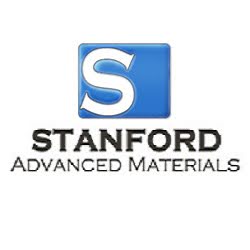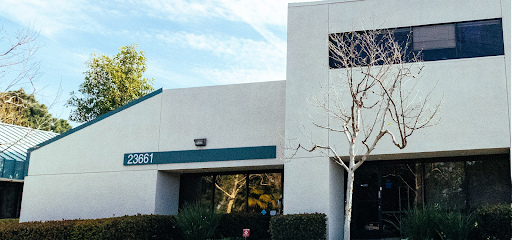Stanford Advanced Materials (SAM)
 | |
| Industry | Chemicals |
|---|---|
| Founded | 1994 |
| Headquarters | Lake Forest, California |
| Products | Pure metal, refractory metal, ceramics, and rare earth elements |
| Website | samaterials |
Stanford Advanced Materials (SAM) is an American metal-based chemistry firm. Established in 1994 in Irvine, California, USA, the company is a global supplier of pure metals, alloys, ceramics, and minerals.[1] The company provides chemicals for research institutes and technical-grade materials for advanced industries, including pharmacy, capacitors, metallurgy, semiconductors, and aviation.[2][3]
History
Established in 1994 in Irvine, California, USA, Stanford Advanced Materials (SAM) is a global supplier of pure metals, alloys, ceramics, and minerals. The company initially provided rare-earth products for research and development (R&D). In 2008, the company relocated its headquarters to Lake Forest, California. It expanded its product line to include materials for all elements on the periodic table in response to the increasing demands of various industries, including ceramics, metallurgy, pharmacy, semiconductors, capacitors, electronics, and aviation. Over the next decade, SAM launched dedicated websites for specific materials, such as magnets, evaporative materials, ceramics, and more.[4]
SAM specializes in high-purity chemicals for research institutes and technical-grade materials for advanced industries. The company's materials are fully customizable and conform to widely accepted standards.[5]
The company's product line includes materials, such as tantalum and niobium, available in various forms like ingots, foils, sheets, tubes, rods, wires, meshes, crucibles, and flanges. SAM offers material compounds, including oxides, carbides, chlorides, ethoxides, and oxysalts for tantalum and niobium. SAM also provides compounds and sputtering targets for thin film coating and deposition. These sputtering targets range from pure metals and alloys to ceramics like oxides, nitrides, carbides, fluorides, and silicides.[6]
Since the beginning, SAM has been on the cutting edge of new ideas in materials science. It has created products such as polymer tungsten to block radiation, medical devices with nitinol wire to protect the esophagus, tantalum marker bands, and lanthanum hexaboride for electron sources.[7]
In 2007, SAM's annual revenue reached over 10 million US dollars.
Products
Stanford Advanced Materials (SAM) is a leading provider of chemical materials, offering a diverse range to fulfill various research and production needs. With over 5,000 online product pages, SAM's product range encompasses pure forms of each element, rare earth materials, sputtering targets, evaporation materials, alloys, superalloys, metal parts, advanced ceramic materials, permanent magnets, metal powders, nanomaterials, bulk chemicals, research compounds, and catalysts.
The company's portfolio includes six key product line brands:
- Stanford Magnets offers high-quality magnets, assemblies, motors, and thin metals for various markets.
- Stanford Materials Corporation (SMC) supplies rare earth oxides, metals, alloys, and minerals worldwide.
- Advanced Ceramic Materials (ACM) Corporation produces ceramic materials such as Boron Nitride, Alumina, Boron Carbide, Lanthanum Boride, and Zirconia
- Advanced Refractory Metals (ARM) manufactures standard refractory metal products in a variety of sizes.
- SAM Sputtering Targets provides sputtering targets and evaporation materials for research and production needs in various industries.
- Stanford Chemicals offers a variety of chemicals, including hyaluronic acid powder, botanical ingredients, vitamins, and pharmaceutical intermediates.
Partnerships
SAM is a trusted supplier for various government and research institutions. It is a standard subcontractor for the Department of Energy's fabrication and scientific equipment. Additionally, the company partners with the Massachusetts Institute of Technology Mesoscale Nuclear Materials Group (MIT-MNM), contributing materials to experimental research and pioneering innovative workflows for the discovery, development, and deployment of structural materials.[8]
References
- ↑ "Stanford Advanced Materials | InterNano". www.internano.org. Retrieved 29 April 2024.
- ↑ "lanl sub contracts". energy.gov. Retrieved 29 April 2024.
- ↑ "Stanford Advanced Materials". LEDs Magazine. 12 August 2014. Retrieved 29 April 2024.
- ↑ metals, samaterials Bio: Stanford Advanced Materialsis a global supplier of a series of pure; Oxides, Minerals Such as; profile, etc View complete (23 January 2014). "About". Stanford Advanced Materials. Retrieved 29 April 2024.
- ↑ "High Purity Gallium Oxide (Ga2O3) Market Evolution: Recent and Emerging Trends, Applications of High Purity Gallium Oxide (Ga2O3) – WBLZMedia". wblzmedia.com. 18 April 2024. Retrieved 29 April 2024.
- ↑ "Polymer tungsten for environmentally friendly medical radiation shield". eco-business.com. Retrieved 29 April 2024.
- ↑ "Stanford Advanced Materials - Matmatch". matmatch.com. Retrieved 29 April 2024.
- ↑ "Oceania International LLC". govtribe.com. Retrieved 29 April 2024.
